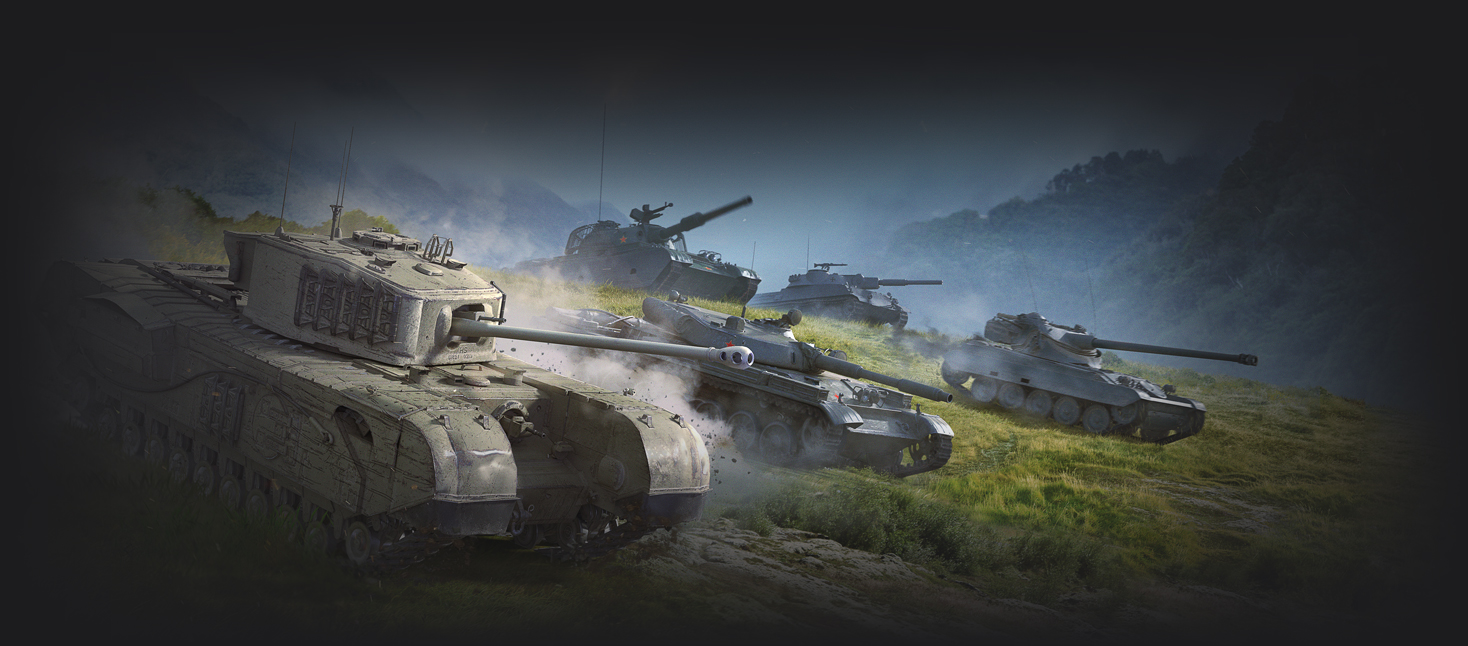- Light Tanks
- Medium Tanks
- Heavy Tanks
- Tank Destroyers
- Self-Propelled Guns
The type and characteristics of the selected vehicle determine the battle tactics. Note that the choice of skills and perks, additional equipment, and consumables also depend on the characteristics of the vehicle. All these factors influence the battle's outcome: the chance of victory increases if a vehicle performs its role in the battle.
In World of Tanks, there are five vehicle types.
![]() Light tanks. Maneuverable vehicles with compact dimensions, good concealment, and view range, but with poor armoring and firepower.
Light tanks. Maneuverable vehicles with compact dimensions, good concealment, and view range, but with poor armoring and firepower.
![]() Medium tanks. Versatile units, quite maneuverable, with considerable firepower and armoring, and often with a good view range.
Medium tanks. Versatile units, quite maneuverable, with considerable firepower and armoring, and often with a good view range.
![]() Heavy tanks. Vehicles with low maneuverability, but decent armor and powerful gun that can endure and cause considerable damage.
Heavy tanks. Vehicles with low maneuverability, but decent armor and powerful gun that can endure and cause considerable damage.
![]() Tank destroyers. As a rule, weakly armored vehicles with a very accurate long-range gun. Such vehicles are characterised by good concealment and can fire for effect from ambush.
Tank destroyers. As a rule, weakly armored vehicles with a very accurate long-range gun. Such vehicles are characterised by good concealment and can fire for effect from ambush.
![]() Self-propelled guns. Slow and poorly armored assault guns with High-Explosive shells firing at long distances can stun or cause damage to several vehicles at once. Some SPGs can use Armor-Piercing and High-Explosive Anti-Tank shells, which are effective against slow and well-armored vehicles.
Self-propelled guns. Slow and poorly armored assault guns with High-Explosive shells firing at long distances can stun or cause damage to several vehicles at once. Some SPGs can use Armor-Piercing and High-Explosive Anti-Tank shells, which are effective against slow and well-armored vehicles.
In any battle, the map can be divided into three battle lines characterized by specific tactics.
Collisions with the enemy take place on the first line. Here, heavily armored vehicles push the avenues of attack, while maneuverable light tanks spot the enemies. The vehicles on the second line support an attack and cover assault vehicles. The third line is meant for sniper vehicles and artillery, which destroy enemies from an ambush and at a long distance.

Light tanks have weak armor, but great view range and concealment. The main objective of light tanks is to spot enemy vehicles and provide the allies with information about the enemy positions. They fire in close combat against slow, weakly armored enemies and immobilize enemy vehicles in view range by damaging their tracks.
The role of medium tanks in a battle depends on the characteristics of a particular vehicle of this type. MTs with medium armor, a good gun and high maneuverability provide fire support and cover the allies. Such vehicles cause damage to the enemy vehicles in the view range. In close combat, these tanks fight against a single objective in case they are able to outflank it. Due to good maneuverability and concealment such meduim tanks are often able to hit first. The support of the first line is performed by the versatile MTs with a quite good frontal and/or turret armor and by MTs characterized by low maneuverability and good armor. Support tanks play effectively at mid-to-close range, spotting the enemies and immobilizing the enemy vehicles.
Heavy tanks fight at close range: due to reliable armor and a powerful gun, they effectively block the damage caused by the enemy. These characteristics allow them to push the avenues of attack and hold the enemy vehicles on the first battle line by repelling a great part of the damage. Heavy tanks with a magazine loading system are characterized by a rather mediocre gun with a great firepower. These factors allow them to support the allies while pushing key avenues of attack.
Tank destroyers with medium armoring provide support to the allied vehicles. TDs with a high concealment, an accurate gun, and mediocre armor are snipers. Such vehicles spot and hit the objectives at any distance from cover. Tank destroyers with a magazine loading system play as support while holding the enemy forces and blocking damage.
SPGs fire at distant enemies with a high trajectory, which makes these vehicles good support vehicles. These vehicles have a powerful gun, weak armor, and low mobility. SPGs are multi-role vehicles, and they can use different shell types. Standard High-Explosive shells may damage or stun a group of vehicles. Alternative High-Explosive shells do not stun enemies, but they can be effective while firing at vehicles with moderate armor protection. SPGs also can destroy enemy internal modules or injure crew members. Some SPGs can use Armor-Piercing and High-Explosive Anti-Tank shells, which are effective while firing at single slow-moving, well-armored vehicles.

Plan your tactics to take advantage of the strong points of your vehicle to fulfill its potential more effectively. To increase your battle performance and gain superiority in the battle, train your crew, apply consumables and install additional equipment on your vehicle. It is assumed that some skills and perks, consumables, and additional equipment are most suitable and corresponding to the selected vehicle type. The choice also depends on the characteristics of the vehicle and your personal playstyle.
© 2009–2024 Wargaming.net All rights reserved.